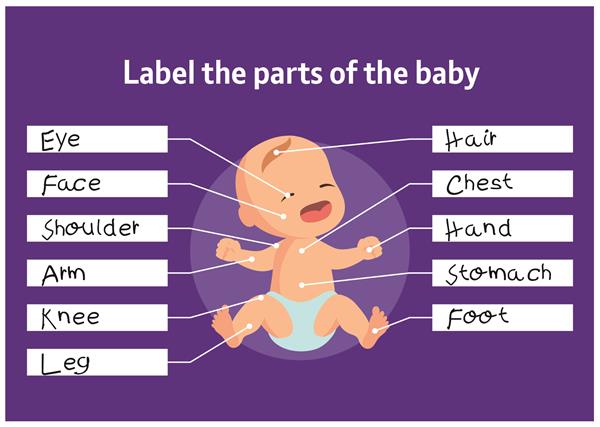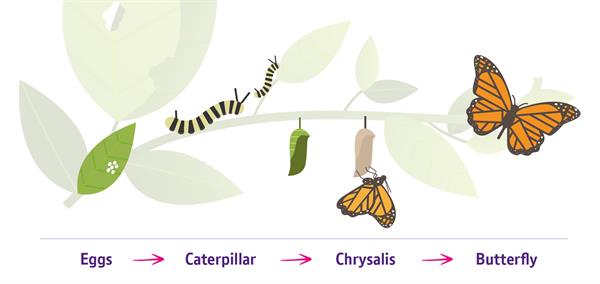3-5 years
Early Years practitioners often create opportunities for pupils to explore detail.
When pupils label simple diagrams and sequence familiar processes, they start to see that breaking things down into their parts helps us learn about them. In roleplay, pupils could think about how to set up a shop – they’ll need merchandise, price tags, a till, money for change, etc. Constructing a model plane, they make the wings, add these to the body, add the wheels: the children think about the parts and then assemble them.
Model these skills and take them a step further by showing how to evaluate that all the necessary things are present.

Simple labelling in Early Years.
5 - 7 years
Written forms of decomposition become more common.
In geography, concept maps are more detailed. In exploring detail, pupils increase their awareness and independence. They should have ongoing opportunities to break things down into their constituents – e.g. a lifecycle and its stages, a diagram and its labelled parts.
Model how to take this further by encouraging your pupils to evaluate whether they’ve missed aspects and to share their understanding with others (collaboration).

KS1 sequencing of the life cycle of a butterfly.
7 - 11 years
The computing curriculum expects that pupils aged 7–11 can ”solve problems by decomposing them into smaller parts.” It also expects pupils to design and create a range of systems with particular goals in mind (“system” implying something with several interconnected components).
Decomposition occurs in planning and collaborating. Provide opportunities for pupils to collaborate as a team. The children could take the broad topic of e-safety, decompose it into its various aspects and then work collaboratively to develop pages for a wiki, each of which explores an individual aspect. The process of writing these pages can be further decomposed into phases of planning, research, drafting, reviewing and publishing.
Organising a school play takes weeks, but it can be decomposed into advertising, set design and construction, script writing, ticket and programme printing, rehearsals and, of course, the performance. Each of these aspects might further break down into distinct tasks which can be ticked off on a checklist as the detail is teased out. Individual children might have specific roles assigned to them, either behind the scenes or within the play, which itself can be decomposed into its different scenes.
As pupils plan their programs, encourage them to use decomposition. The designing of a quiz to run on a computer might be decomposed as follows:

A quiz can be decomposed into its parts, to help pupils work on each part in turn.
In debugging, pupils see how to break down their programs into smaller parts, to think what each of these should do and then to test if that’s the case. By age 10–11, pupils should be starting to use decomposition independently to help them add detail and precision to their work.